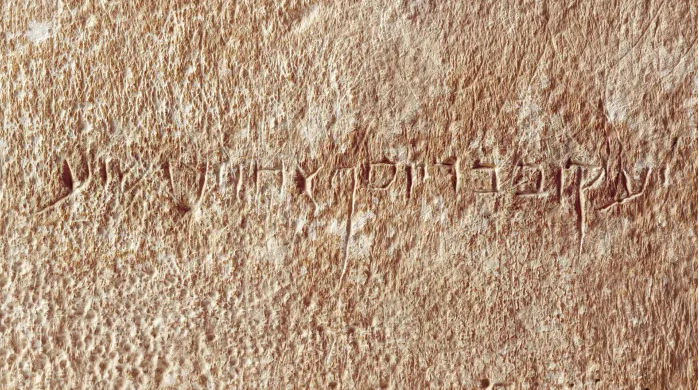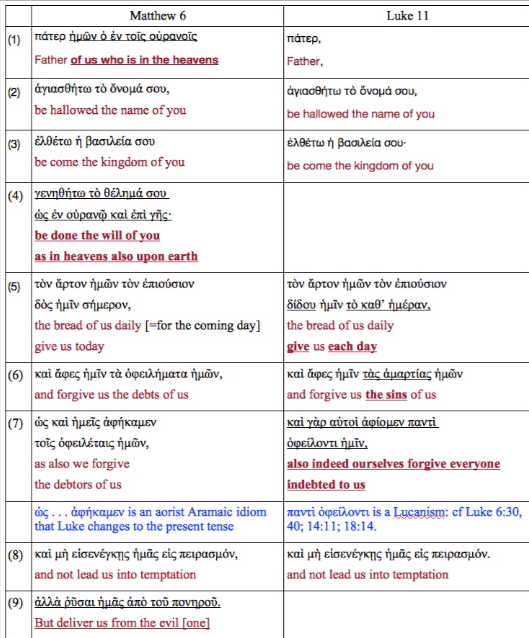THE LORD’S PRAYER
Every single thing that currently exists on earth had a kind after which it was modeled. Prayer isn’t an exception either. Regardless of how we pray today, the Scripture contained a model given by Jesus of how we are to pray. This has generated a number of questions and controversies all of which this page was created to answer.

From the days of the Early church till our current Latter churches, the Christianity boat has been rocked by various tempests of controversies and diversities in beliefs, doctrines and practices. Several denominations currently exist with theological differences and various modes of worship that currently divide Christians.
However, talking about The Lord’s Prayer, irrespective of our differences, Fuller Seminary professor Clayton Schmit said, “there is a sense of solidarity in knowing that Christians around the globe are praying together … and these words always unite us.”
Do those words always unite us? What is the origin of this unifying factor amidst the myriads of differences? What is its essence? Where was it written? What are its varieties? “Varieties again?” you say?
Well, welcome to a page that teaches and clear all you need to know about the most popular prayer in the Christian history, and a prayer that has been handed down from the lips of the aged down to the infants’ across hundreds of ages, The Lord’s Prayer.
What Is The Lord’s Prayer?
That question is a good place to start.
The Lord’s Prayer, also called the Our Father or Pater Noster, is a central Christian prayer which, according to the New Testament, Jesus taught as the way to pray. What we currently dub The Lord’s Prayer today had its first mention in the first of the four gospels, Matthew 6:9-13
“After this manner therefore pray ye…”
Matthew 6:9ª
It occurred in that text as a part of Sermon on the Mount, the longest sermon Jesus preached. Taking a careful cognizance of that excerpt simply imply that The Lord’s Prayer is a manner ( a model, pattern or an example) that Jesus gave us per how to pray.
The Lord’s Prayer: Every Question About The Lord’s Prayer Answered
Where Is The Full Lord’s Prayer In The Bible?
That question immediately introduces a bias that needs to be critically looked at. The bias exists in that word “full”. As careful word-readers, that readily drops a few things into our minds, including but not limited to the following
i. The Lord’s Prayer is written in the Bible and hence not a fabrication
ii. The Lord’s Prayer is of certain version
iii. There is an original full version
iv. There is another ‘un-full’ version that exists
v. Both the full and the original and the abridged versions are documented in the Bible
While none of those biases is outrightly wrong, some of them require a tweak.
Indeed the Lord’s Prayer is Jesus’ creation as we saw in the section above, Matthew 6:9-13. Indeed there are two versions which are named after their authors: The Matthean Version, written by Matthew; The Lucan version, written by Luke. However, both versions are originals and “full,” as relatively implied. None of them is fake nor is one an synopsis or elaborated version of the other. And yes, both are documented in the Bible, Matthew 6:9-13 for the Matthean version, and Luke 11:2-4 containing the Lucan version.
Who Wrote The Lord’s Prayer?
From the exposition in the last segment, this question readily gets an answer.
Two people independently wrote the Lord’s prayer: Matthew and Luke.
The Matthean Version Of The Lord’s Prayer
9 After this manner therefore pray ye:
Our Father which art in heaven,
Hallowed be thy name.
10 Thy kingdom come.
Thy will be done in earth, as it is in heaven.
11 Give us this day our daily bread.
12 And forgive us our debts, as we forgive our debtors.
13 And lead us not into temptation, but deliver us from evil:
For thine is the kingdom, and the power, and the glory, for ever.
Amen.
Matthew 6:9-13 (KJV)
The Lucan Version Of The Lord’s Prayer
And he said unto them, When ye pray, say,
Our Father which art in heaven,
Hallowed be thy name.
Thy kingdom come.
Thy will be done, as in heaven, so in earth.
3 Give us day by day our daily bread.
4 And forgive us our sins; for we also forgive every one that is indebted to us.
And lead us not into temptation;
but deliver us from evil.
Luke 11:2-4 (KJV)
Why Are There 2 versions Of The Lord’s Prayer?
The question of the existence of more than one version of the Lord’s prayer should not naturally come strange to us if we are diligent students of the Scripture. But to begin with, the Bible is a combination of Scriptures written by many authors. In some cases, some authors recorded same accounts but from the perspective from which each perceived it. Instances include certain stories in the book of Kings with a variety in Chronicles, and the four gospels (Matthew, Mark, Luke, John).
To begin with, scholars have established that both versions are originals, and none is neither an abridged or lengthened version of the other. The major reason that informed the variety between the Matthean and Luke accounts of the Lord’s prayer as studies have shown, is the temporal factor.
While the longer version, the one documented by Matthew, existed within the Sermon on the Mount, the longest of Jesus’ teachings, the Lucan version existed in the context of Jesus’ response to the question of a disciple that asked Jesus to teach them to pray. The Matthean version in terms of chronology came earlier in Galilee, most likely in the first year of Jesus’ ministry as He started out teaching people exclusively about the nature and the conduct of the Kingdom of God and those who sought to enter. The Lucan version as studies have shown came quiet a little later, not in Galilee but in Judea this time, about one year or more after the sermon on the mount.
Chances are that the disciple that asked this question was either not a part of the Sermon on the Mount and never knew how to pray or was a part of the sermon but had simply forgotten or didn’t just get it. Whichever way it is, Philip’s question and Jesus’ answer in John 14:8-9 proves a point that is worthy of note that.
Philip saith unto him, Lord, shew us the Father, and it sufficeth us.
9 Jesus saith unto him, Have I been so long time with you, and yet hast thou not known me, Philip?
he that hath seen me hath seen the Father; and how sayest thou then, Shew us the Father?
John 14:8-9
There is a possibility Jesus answered the disciple that asked for them to be taught to pray the way He answered Philip in the Scripture. The rest of the John 14 account contained Jesus’ response to Philip’s question but His actual answer to that question didn’t exceed verse 11 before the conversation drifted to the promise of the Holy Spirit. That is because Jesus had earlier taught exclusively on the relationship between Him and the Father in John 6:22-71, 49 straight verses.
While those two teachings about Him and the Father were documented in the same book of John, this issue about the versions of The Lord’s Prayer were simply recorded in various books by different writers. Therefore, The Lord’s Prayer in Luke most likely existed as a reference to an earlier more detailed expression of that prayer that Jesus had given. However, it is vital to reiterate that both are distinct originals.
To cap it all, from ages of the Church history down to the present times, the Matthaean version has completely ousted the Lucan in general Christian usage.
What Are The Original Words Of The Lord’s Prayer?
Like you most likely have guessed, the original words of the Lord’s Prayer were not written in English. An attempt to find the actual words would lead to the arising of the languages in which both books, Matthew and Luke, were written.
According to Theological studies, both books were written inn Greek. Matthew in Koine Greek, and Luke in Idiomatic Greek. That drives home a salient fact, that the Lord’s Prayer we currently read in English was a translation from the initial Greek text. Here is what the original text alongside the raw adjusted literal translation looked like:
What Is The Difference Between The Lord’s Prayer In Matthew and Luke?
As rightly established earlier that both versions of the Lord’s prayer are valid, and were given at different times and various contexts by Jesus, the only difference between them is structural, in that the Matthean version is longer in terms of the number of words and sentences.
But both renditions of the Lord’s prayer share the same purpose and goal, which is to provide the disciples a template to follow in creating their own prayer.
What Language(s) Did Jesus speak?
Since The Lord’s Prayer was written in Greek, does that suggest then that Jesus spoke Greek?
Not so fast. While there has been various debates on the actual language that Jesus spoke while He was on earth, one thing has been established, and that is the high possibility that Jesus was bilingual. Two languages have been forward as the languages that Jesus spoke: Aramaic and Hebrew.
The most recent iteration of the argument about the language(s) that Jesus actually spoke occurred in 2014 at a public meeting between Benjamin Netanyahu, the Israeli prime minister, and Pope Francis during the latter’s visit to the Holy Land. Speaking to the pope through an interpreter, Netanyahu declared: “Jesus was here, in this land. He spoke Hebrew.”
Pope Francis instantly broke in, correcting him. He spoke the word “Aramaic,” a reference to the mostly extinct ancient Semitic language that was first spoken by the Aramaeans in the late 11th century B.C. According to the Washington Post, communities of Chaldean Christians still speak a variation of it today in Iraq and Syria.
Pope Francis and the majority of religious scholars and historians concur that the historical Jesus mostly spoke a Galilean dialect of Aramaic. By the seventh century B.C., the Aramaic language had spread widely through trade, conquests, and conquest, and it had come to dominate much of the Middle East.
The claim that Jesus spoke Aramaic was further backed by the inscriptions on the tomb of James, the brother of Jesus:

It is important to note that Hebrew language was also in existence at this time alongside Aramaic in a well-defined diaglossic relationship. While Hebrew was the refined language for the elite and the sacred language in which some Scriptures were written, Aramaic was a language of lower prestige used in their everyday communications and daily lives, making it the most likely language that Jesus and his disciples would have used Aramaic on a daily basis.
However, the Book of Luke gave us a clearer insight into the linguistic context in which Jesus existed.
Firstly, the book of Isaiah, whose scroll Jesus read in Luke 4:16 was written in obtuse compact poetic Hebrew, proving that Jesus certainly understood and spoke Hebrew.
Secondly, Luke 23:38 in describing a particular event in the crucifixion of Jesus recorded thus:
“And a superscription also was written over him in letters of Greek, and Latin, and Hebrew, THIS IS THE KING OF THE JEWS.”
If anything, one thing is certain that Jesus (and by extension His disciples)spoke and understood at least one of those three languages. That makes a strong claim for the Lord’s Prayer written in Greek. Another claim that supports that on washingtonpost.com reads thus: “The consensus of modern scholars is that the New Testament was written in Greek and that an Aramaic source text was used for portions of the New Testament, especially the gospels”
Was The Lord’s Prayer changed? Why?
The Lord’s Prayer, some believe, is one of the long-standing Christian doctrines that has remained unchanged and maintained its raw form for scores of ages. However, with the innovation of several contemporary versions of the Bible, various forms, editions, and versions of the Lord’s Prayer have popped up in the last century.
It is worthy of note that regardless of the ways those several contemporary versions have rendered this sacred prayer, the King James Version has trumped them all and remained the most widely used and accepted until 2017 when Pope Francis proclaimed publicly that he believed the wording of the Lord’s prayer should be altered.
He spoke particularly of the “Lead us not into temptation” line. In an interview with an Italian Television, he said “It is not a good translation because it speaks of a God who induces temptation. I am the one who falls. It’s not him pushing me into temptation to then see how I have fallen. A father doesn’t do that; a father helps you to get up immediately. It’s Satan who leads us into temptation – that’s his department.” And proposed instead that the line be rendered as “Do not let us fall into temptation”.
This new wording was approved by the general assembly of the Episcopal Conference of Italy and subsequently appeared in the third edition of the Messale Romano, the liturgical book that contains the guiding texts for mass in the Roman Catholic church. However, despite a backing as strong as that, this modification has not received a significant acceptance in the Christian ranks. What is the modern version of the Lord’s prayer?
What Is The Main Message Of The Lord’s Prayer?
The Lord’s Prayer has most often been misconstrued down the ages is not actual words for us to recite as we pray, neither is it a limitation on the things for which we can pray. Rather, it is a handy guide on how to pray. So we can pray our needs to God as they come without even mentioning any of the Lord’s Prayer words.
It is only expedient that as a model given to us by Jesus for us to pray, we understand the Lord’s Prayer, its meaning, essence, and the significance of every line which we examine simply in the next section.
Meaning of The Lord’s Prayer Line by Line
1. Our Father
A straightforward approach to Our Father, Who Art in Heaven, begins the prayer. This speech reinforces the fundamental Christian conviction that God is our heavenly Father and is both present with us in spirit and above us in the idyllic world of Heaven. As we pray to “our” Father rather than “my” Father individually, this opening address also connects Christians from all around the world into a single community of worshipers.
2. Hallowed Be Thy Name
The word “holy” or “sanctified” is used to describe anything as being “hallowed.” God is the height of holiness, and his name is holy. No one is as holy as the Lord (1 Samuel 2:2).
Christian believers agree that the Almighty Father ought to be honored and worshiped beyond everything else. We ask for the world to recognize the holy name of God as the only true God, the Creator, and the Ruler of the universe in our plea.
3. Thy Kingdom Come
The petition has two parts. So that we can live in a world that is marked by faith, hope, and love, we first pray for the Kingdom of God to manifest in the here and now (1 Corinthians 13:13).
The promise of a “new heaven and a new earth” is the second thing we pray for. When that promise is realized, the faithful will spend all of eternity with God in His Kingdom as residents of a Holy City where there is no more suffering, death, or crying (Revelation 21:1-4).
4. Thy Will Be Done on Earth as it Is in Heaven
God rules justly and compassionately from Heaven (Isaiah 30:18). He wants us to worship Him and show one another affection. Jesus condensed the totality of the Bible into two simple instructions: to love God with all of your heart, soul, and mind, and to love your neighbor as yourself (Matthew 22:37-40).
The act of praying this supplication is a selfless gesture of submission to God’s will. Here, we humbly ask God, in particular, to grant us the stamina to live a life that honors Him and demonstrates compassion and justice for others.
5. Give Us This Day Our Daily Bread
The Good News feeds the soul in the same way that a healthy diet does for the body. The Bible declares that “man shall not live on food alone, but on every word that proceeds out of the mouth of God” (Deuteronomy 8:3).
To have the strength to go out into the world and share His Message via our words and deeds, we pray for spiritual sustenance in this appeal. This nutrition comes from the Scriptures and fellowship with Christ, who is the “food of life” who descended from Heaven so that “whoever eats this bread will live forever” (John 6:48-58).
6. And Forgive Us Our Trespasses, as We Forgive Those Who Trespass against Us
This could be the hardest part of the Lord’s Prayer to pray and follow. However, there is much good advice in this request. While anybody can beg for forgiveness, thinking about how we forgive others can help us develop the patience and grace that can truly change our lives.
When extending forgiveness becomes particularly challenging, the Bible advises that prayer, when our minds and hearts are aligned with God, is a good moment to do it (Mark 11:25).
We choose to demonstrate God’s mercy and love in our acts by choosing to replace resentment with forgiveness. As a result, we are better equipped to walk boldly toward God, who desires that we take every step in His direction.
7. And Lead Us Not into Temptation
We can sin and drift further and further from God as a result of temptation. Due to the free will our Creator bestowed upon us, we choose to sin independently rather than being led to do so by God. However, our God is trustworthy and guarantees to deliver us from all temptation (1 Corinthians 10:13).
In this supplication, we admit that human frailties are a byproduct of our free will. In order to overcome those flaws, we ask God to extend His guiding hand over us and give us the discernment required to resist temptation and sin.
8. But Deliver Us from Evil
This petition addresses the numerous occasions when we do succumb to sin and temptation. If we keep turning to the Lord in these trying times, He will respond and deliver us from all of our worries (Psalm 34:4).
In this appeal, we implore the Almighty Father to rescue us from the clutches of evil when we are caught up in sin. We also ask God to keep us safe from the devil’s grasp in all upcoming circumstances as part of our prayer.
At the end of an ultimate assessment of the Lord’s Prayer, we have discovered that it is an all-encompassing model, in that all the prayers we pray in our everyday lives can be adequately fitted into one or more of the lines of the Lord’s prayer.









